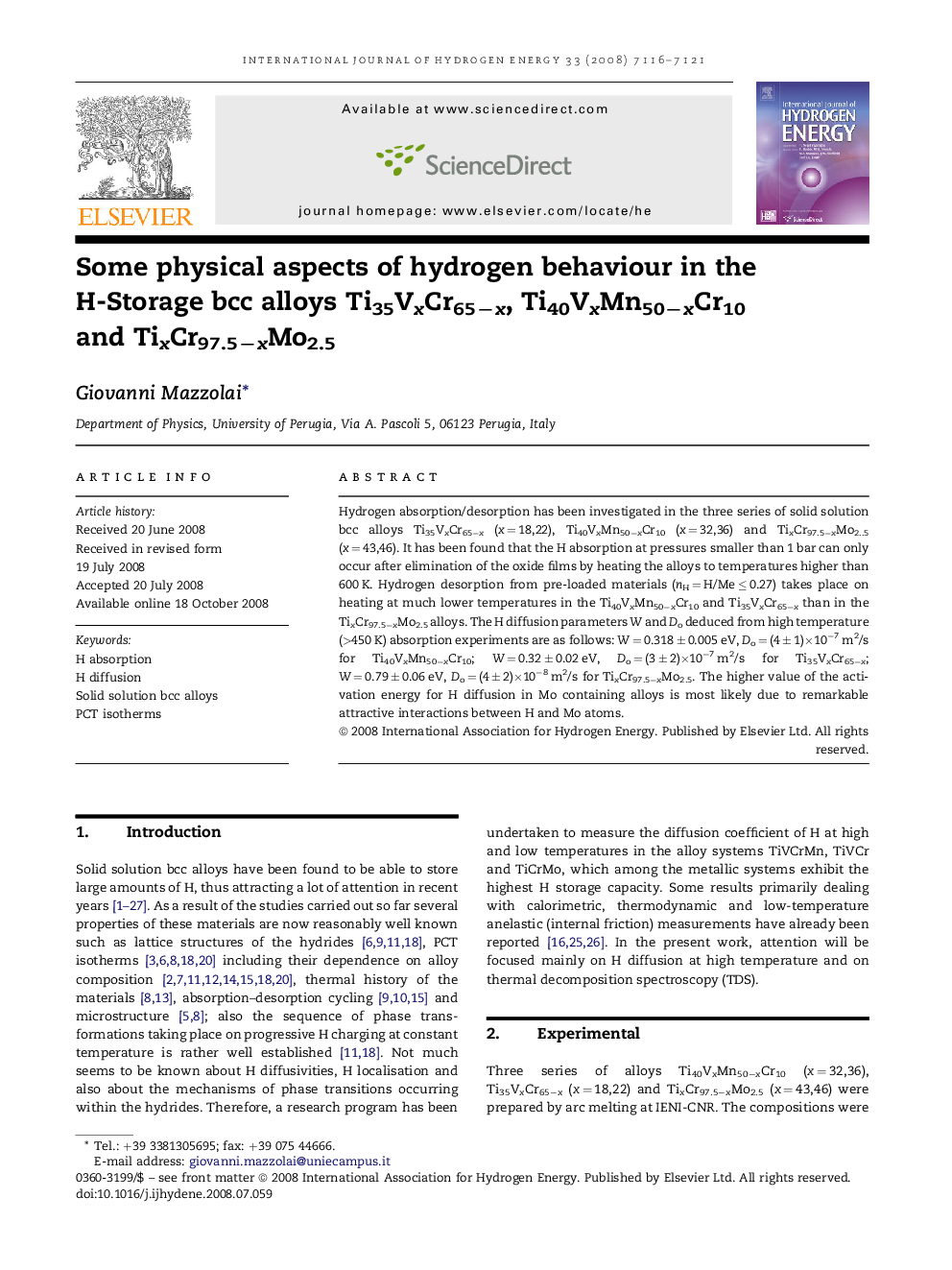| Article ID | Journal | Published Year | Pages | File Type |
|---|---|---|---|---|
| 1278254 | International Journal of Hydrogen Energy | 2008 | 6 Pages |
Hydrogen absorption/desorption has been investigated in the three series of solid solution bcc alloys Ti35VxCr65−x (x = 18,22), Ti40VxMn50−xCr10 (x = 32,36) and TixCr97.5−xMo2.5 (x = 43,46). It has been found that the H absorption at pressures smaller than 1 bar can only occur after elimination of the oxide films by heating the alloys to temperatures higher than 600 K. Hydrogen desorption from pre-loaded materials (nH = H/Me ≤ 0.27) takes place on heating at much lower temperatures in the Ti40VxMn50−xCr10 and Ti35VxCr65−x than in the TixCr97.5−xMo2.5 alloys. The H diffusion parameters W and Do deduced from high temperature (>450 K) absorption experiments are as follows: W = 0.318 ± 0.005 eV, Do = (4 ± 1)×10−7 m2/s for Ti40VxMn50−xCr10; W = 0.32 ± 0.02 eV, Do = (3 ± 2)×10−7 m2/s for Ti35VxCr65−x; W = 0.79 ± 0.06 eV, Do = (4 ± 2)×10−8 m2/s for TixCr97.5−xMo2.5. The higher value of the activation energy for H diffusion in Mo containing alloys is most likely due to remarkable attractive interactions between H and Mo atoms.
